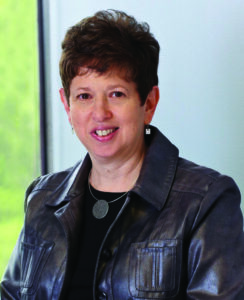Reviewed by Susan Collin, Senior Vice President, Director Qualitative Research, RTi Research, Inc., Norwalk, Connecticut scollin@rtiresearch.com
I was excited to read Start More Than You Can Finish, by Becky Blades, for a couple of reasons. As a qualitative moderator who also creates mixed media collages, I am perpetually interested in new ways of looking at situations, whether it’s the participant in front of me or the materials I am assembling on a canvas. Plus, after listening to Blades in several interviews, I appreciated her creative outlook and varied accomplishments, including being a public relations agency owner, painter, book author, comedy show writer, and podcaster.
Right off the bat, this book screams inspiration, from its whimsical ink splotches and line drawings to creative stories and quotes. Its premise is that, ultimately, the more you start, the more you will finish. Blades is speaking to the many who have trouble starting anything for various reasons: those not knowing how to begin a project for fear there is only one correct way, perpetual planners who use preparation as a way to procrastinate, and worriers who fret that not all resources are in place to make the start worthwhile.
The author is not preaching that we should approach new endeavors, including those with hefty time or financial investments, haphazardly. Rather, we should give ourselves permission to start, even with the kernel of an idea, and see where it leads. To me, this feels a lot like what marketers do when, let’s say, the plan is to revamp brand messaging. The start may involve brainstorming, and market research often follows to check hypotheses. Along the way, new learning informs the next step in brand rejuvenation.
Blades is what she coins a “stARTist,” “a person who enjoys taking the creative initiative to start, restart, reinvent, or renew.” These people have ideas whirling in their brains and can’t wait to start exploring to see what develops. They ask questions of themselves and others to figure out how they can accomplish what’s ahead, all the while being just fine if what they set out to do turns into something else.
She reminds us that there are plenty of no- or low-cost resources that can provide the match to ignite our creative juices. These include those in the local community—such as the library, community college, and trade or professional associations—as well as rich online information and courses.
Besides providing many examples of starts from her own career and creative projects, Blades illustrates her “start more” philosophy by sharing her conversations on this topic to help understand what is standing in one’s way. Some of her questions are: What would you do if you had the time to start? What are the reasons this idea entices you? Which tools do you have in place that will enable you to start right now?
Additionally, there are examples of people whose careers started in one area and morphed into something that could not possibly be foreseen. Take the boxer whose quest for a healthier lifestyle led him to become a speaker at vegan conferences and a nonprofit creator who talks about self-esteem to high schoolers.
Most chapters end with a “START HERE” primer to help discern where you are in the process, from idea generation to journaling techniques, to untangle what you need or what is holding you back. There are about a dozen of these jump-starters. I decided to read the book straight through and am now returning to these fun and thought-provoking gifts for my own non-starts or midway stops.
Blades’ thoughts on starting more than you can finish may offer a contrarian view to those who believe that if you can’t get to the finish line of the original goal, why bother starting. I, on the other hand, found her approach refreshing and recite it often to myself and to others who are seeking inspiration just to start.





